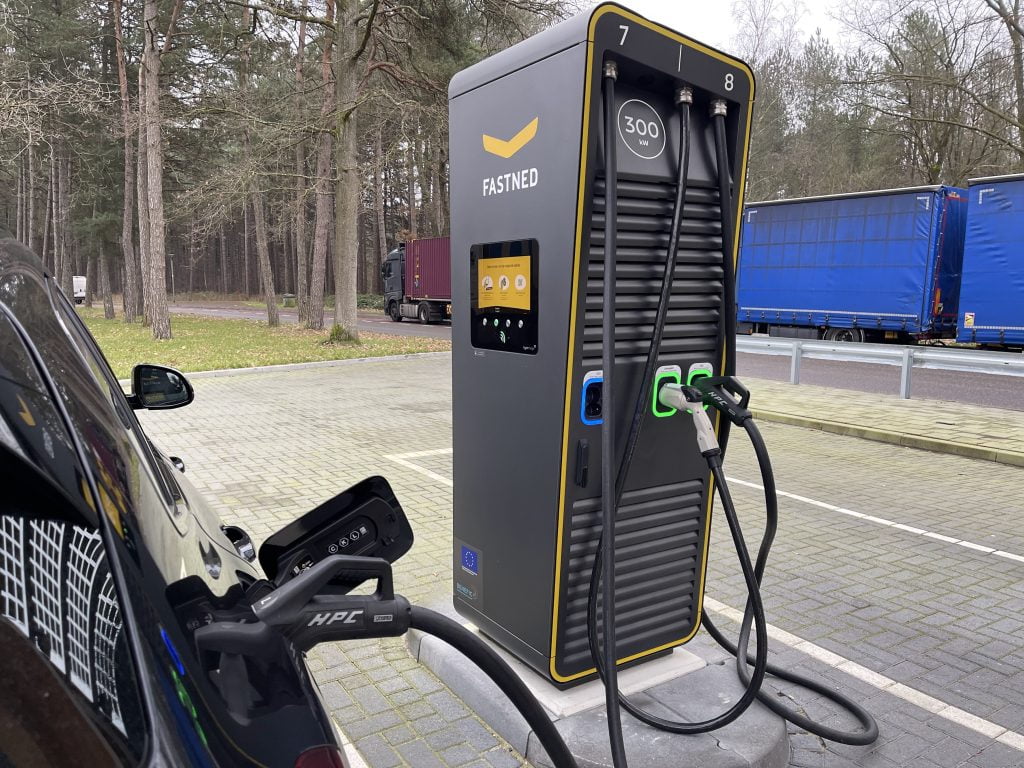Monopolies and mystical prices, so it's high time for a more transparent electric car market.
If you have an electric car, you have to charge the car every now and then. Electric driving is encouraged as the greener, more sustainable option, but exorbitant charging rates along highways cast a shadow over the promise of affordable and accessible electric mobility. This finding raises a worrying question: will electric driving only be an option for the rich?
dynamic rate signs
The Flemish Minister of Mobility & Public Works, Lydia Peeters, announces that fast charging infrastructure will be rolled out every 2025 kilometers by 25. A noble goal, but at what cost? More charging stations do not necessarily mean lower prices, especially if those stations are owned by a few dominant players such as fastned en Engie. Implementing dynamic tariff boards, such as those used in France, would already be a significant step forward towards consumer transparency.
In addition, there is a noticeable lack of charging stations suitable for larger vehicles such as trucks and vans. When we talk about the transition to a more sustainable transport system, this aspect cannot be overlooked.
congregations
The issue of monopolistic market dynamics also deserves further attention. There are cases where cities have only one charging station provider, giving this provider a monopoly on the local market. This leads to pricing that is not necessarily in the consumer's favor. The monopoly position that many charging companies have in many cities poses yet another obstacle. Municipalities should allow more competition to break monopolistic practices and give consumers a breathing space.

Although electric driving is being touted as the 'zero-emissions' future of mobility, the financial barriers associated with using highway fast chargers could seriously hinder the transition to a more sustainable future.
If electric driving is really the future, then it is high time that we take the hidden costs that this future entails seriously. And the same applies to consumers; If you're heading out with your electric vehicle, you better be aware of where and when you decide to charge your battery. Ultimately, the journey to a more sustainable future should not be a journey that only the wealthy can afford.
Energy prices on international markets appear to be stabilizing, yet charging card rates continue to rise steadily. Major car manufacturers such as BMW are also not shy about adjusting their conditions and prices. What choice do you have as a consumer? Canceling contracts is not an option and downtime is the worst possible alternative.
And yet it seems that electric driving is reserved for the lease driver. More and more people are looking at an electric car. Buying it is often expensive. Private leasing can be interesting to look at. Chinese companies have quickly captured a large share of the consumer market. The current strikes at the major American car manufacturers are grist to the mill for the new players and the supply of EVs in Europe.
10 minutes
Finally, there is the promise of fast charging. The British WhatCar investigated the effectiveness of fast chargers and found that more expensive cars can travel up to 190 miles in ten minutes. For more affordable models such as the Volkswagen ID.3 this is 80 kilometers. While this is impressive, it brings us back to the initial point: it's time we question the true costs of this progress. The diversity in range and charging speed adds another layer of complexity to an already confusing market. It requires thorough consumer research to find out which electric vehicle and which charging station is the most cost-efficient.
With winter just around the corner, we are looking forward to the range of electric cars. When the thermometer drops, the range of electric cars also falls into an icy slide. An electric car that can easily cover a distance of 350 kilometers in milder conditions could well stagnate at a paltry 250 kilometers in the freezing winter months. Not all electric cars are created equal in this regard as sensitivity to cold varies considerably between makes and models.
Where does this phenomenon come from? The culprit is the battery pack, which has an ideal operating temperature, usually around twenty degrees Celsius. As temperatures drop, it becomes increasingly difficult for the battery pack to perform its task properly. This translates to reduced range, suddenly leaving electric vehicle drivers with a new set of winter headaches and fees.



